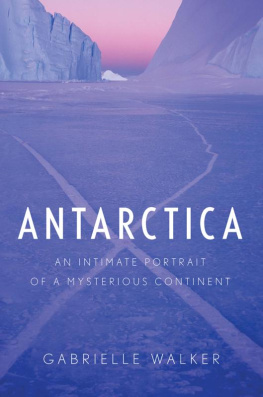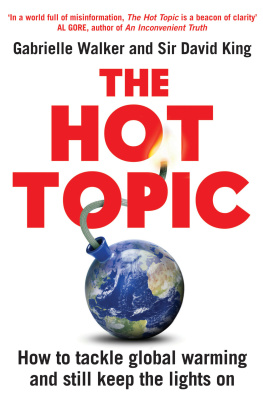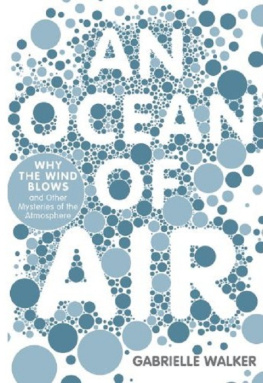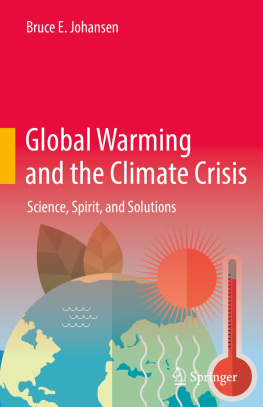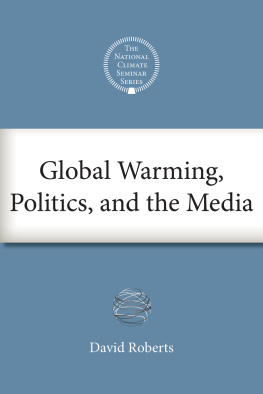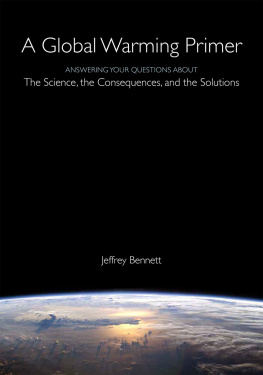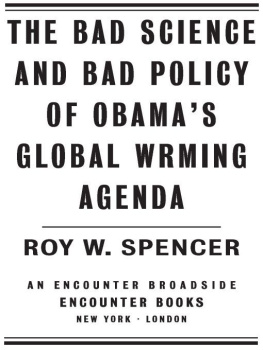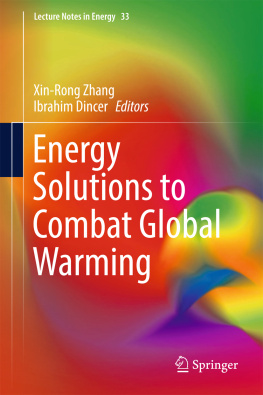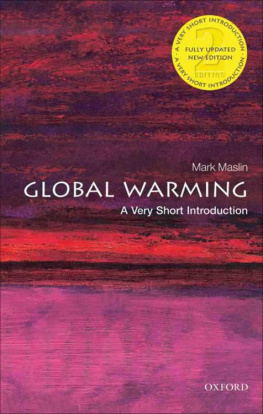Copyright by Gabrielle Walker and Sir David King 2008
All rights reserved. No part of this publication may be reproduced or transmitted in any form or by any means, electronic or mechanical, including photocopy, recording, or any information storage and retrieval system, without permission in writing from the publisher.
For information about permission to reproduce selections from this book, write to or to Permissions, Houghton Mifflin Harcourt Publishing Company, 3 Park Avenue, 19th Floor, New York, New York 10016.
www.hmhco.com
First published in Great Britain in 2008 by Bloomsbury Publishing Plc.
Diagrams by John Gilkes
The Library of Congress has cataloged the print edition as follows:
Walker, Gabrielle.
The hot topic: what we can do about global warming/
Gabrielle Walker and Sir David King1st U.S. ed.
p. cm.
Includes bibliographical references and index.
1. Global warming: I. King, D. A. (David Anthony), 1939 II. Title.
QC981.8.G56W35 2008
363-738'74dc22 2007045080
ISBN 978-0-15-603318-3
e ISBN 978-0-547-54040-5
v4.0517
For Rosa Malloy and Jane Lichtenstein
Preface
The North Pole of planet Earth is an extraordinary place. Its a smudgy circle of frozen ocean, hemmed in by the surrounding landmasses of Siberia, North America, and Europe. Cracks occasionally appear in its surface where the ice has been torn apart by winds above and currents below. But for the most part, its gray-white facade is as unyielding as rock. You can walk on it, stamp on it, even land planes on it. When youre there, the Arctic sea ice doesnt seem remotely fragile, just motionless, silent, and strong, as if water had been turned irreparably to stone.
And yet photographs taken from satellites have now shown conclusively what scientists have been fearing for decades: The North Pole is melting. Each summer, the spread of the sea ice shrinks a little farther. It is vanishing from beneath the feet of the Arctics polar bears. If we do nothing to stop it, by the end of the century the ice, polar bears and all, could be gone.
The story of global warming has progressed in the past few years from conjecture to suspicion to cold, hard fact. We now know for certain that on every inhabited continent on Earth, year by year and decade by decade, the worlds temperature is rising. Something, or someone, is turning up the heat.
Should we care? After all, over the billions of years our planet has been around its climate has changed many times. In the geological past there have been ice ages, global floods, and heat waves. There have also been winners and losers throughout Earths historysome species have become extinct while others have gone forth and multiplied.
But this time is different. If the current wave of change has its way with us, the polar bears will not be the only ones to suffer. Since then, the scale of the problem has become even clearer.
Also, the amount of material focusing on the problem has multiplied. Books, newspapers, TV, radioanother day, another headline. It has become almost impossible to sort out what really matters.
Amid this cacophony there is a handful of voices that persists in arguing that warming isnt happening, or that its not caused by humans, while others see disaster around every corner and indulge in gory scenarios that have been labeled climate porn. We dont agree with either of these approaches. Climate change is happening, and humans are largely to blame. However, we do not believe that disaster is inevitable. A few shiny new Priuses wont get humans out of this mess, nor will sticking our collective heads in the sand. But we still have time to tackle the worst aspects of climate change if we act fast and work hard.
In the course of this book we will pick our way through the blizzard of information and misinformation about global warming, explaining each point in the most straightforward way possible. We are both trained scientists, and our approach will be a scientific oneto examine the evidence, giving most weight to rigorous research that has been tested by peer review.
If youre looking for a debate about the science of global warming, you wont find it here, though we do cover some of the most common misconceptions about the problem in a technologies, and a political overview of where the world stands in its fight to solve the problem.
Though between us we have considerable experience in the worlds of media and politics, we are neither lobbyists nor politicians, and we have no personal axes to grind. We will lay out the entire essential story of global warmingwhat we humans have done, how we have done it, how we will need to prepare for the changes we cant stop, and how we can prevent the even worse effects that will otherwise follow. We aim to tell you everything you wanted to know about global warming but were too depressed to ask.
However, this is not a book about generic green issues. Most measures that increase efficiency and reduce waste will also helpat least a littleto reduce global warming. But this book is not a general environmental call to arms. It proposes a very specific set of solutions to a very specific, though wide-ranging, problem.
In particular, it seeks to show that the story need not have an unhappy ending. Global warming is a serious problem, probably the most serious that the human race has, collectively, ever faced. But we can still do something about it. This is a time for neither pessimism nor denial. It is a time for constructive, determined action.
Part I
THE PROBLEM
Before we can start discussing how to get ourselves out of the climate mess, we first need to set out the problem. There has been an extraordinary amount of confusion and misinformation about the science of climate changewhich is surprising, since it is one of the few areas of complex science for which researchers are in almost unanimous agreement. In the next few chapters we will explain the science of global warmingwhat is happening, how we know the cause, the future changes that are now inevitable, and the ones that we still have a chance of avoiding.
Warming World
Climate change isnt new. Our planet is restless and its environment rarely stays still for long. There have been times in the distant past when carbon dioxide levels were much higher than they are today and Antarctica was a tropical paradise. There have been others when carbon dioxide levels were much lower and even the equator was encrusted with ice.
But over the past ten thousand years, the time during which human civilization has existed, Earths climate has been unusually steady. We humans have become used to a world where the way things are is more or less the way they will be, at least when it comes to temperature. In other words, we have been lucky.
Now our steady reliable climate is changing, and this time nature isnt to blame. But how do we know for certain that the world is warming, and how can we identify the culprit?
The Heat Is On
When youre trying to determine whether the worlds temperature is rising, the biggest problem is picking out a signal from the background noise. Even in our relatively stable times, temperatures lurch up and down from one day to another, from season to season, from year to year and from place to place. To be sure that the underlying trend is changing, you need to take precise measurements from many different places around the world, and do so for an extremely long time.
We do have a few long temperature records, thanks to certain individuals who decided to make the measurements just in case they ever proved useful. The worlds longest is the Central England Temperature Record, which is a tribute to the obsessive data-collecting habits of seventeenth-century British natural scientists. It covers a triangular region of England from London to Bristol to Lancashire and stretches back to 1659. This impressive record shows clear signs of warming, especially toward the end of the twentieth century.
Next page

